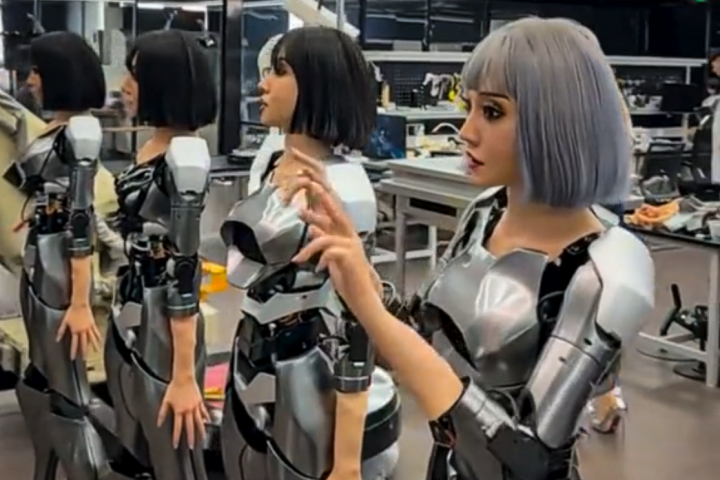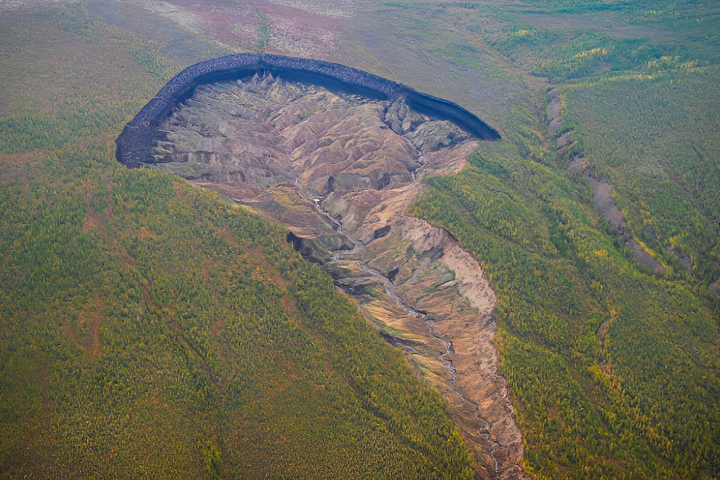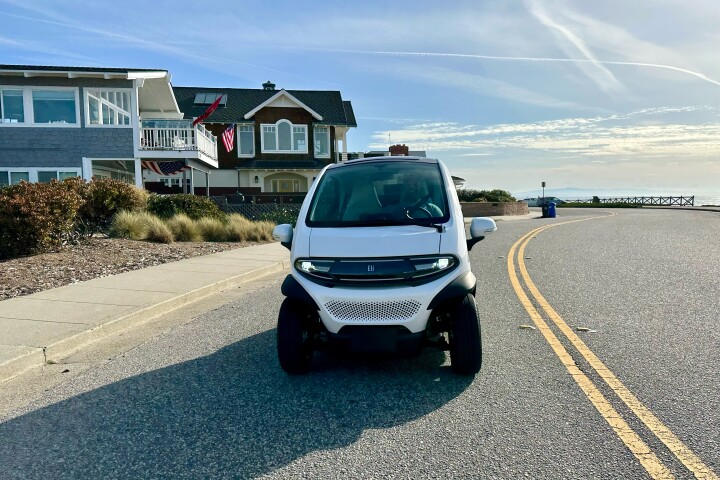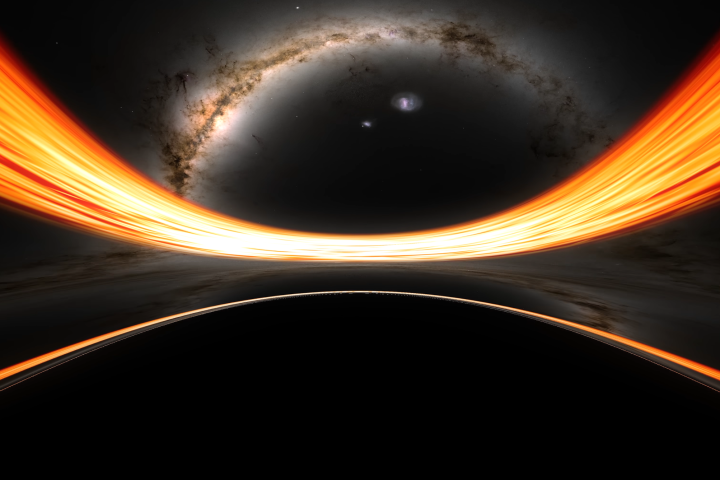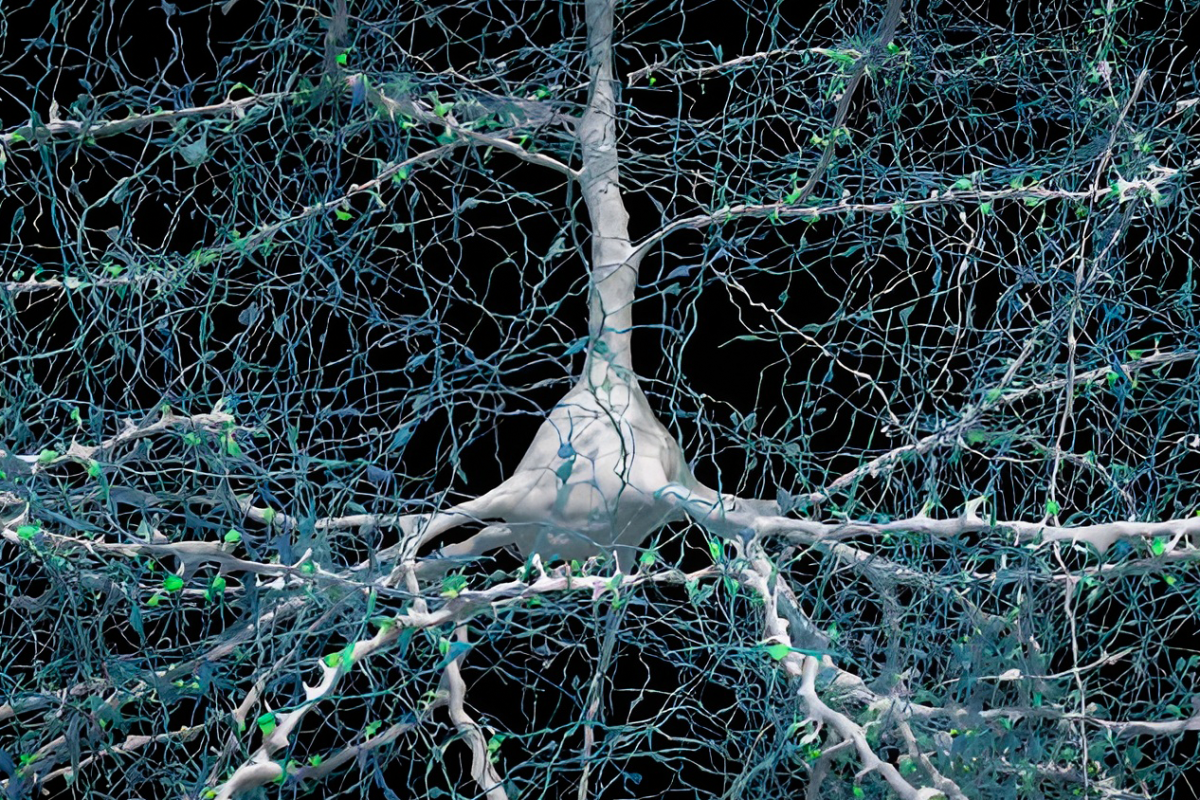 One neuron (white) connects to over 5,000 axons (blue) from other neurons, via at least that many synapses (green). Google Research & Lichtman Lab (Harvard University). Renderings by D. Berger (Harvard University) – View 6 Images –
One neuron (white) connects to over 5,000 axons (blue) from other neurons, via at least that many synapses (green). Google Research & Lichtman Lab (Harvard University). Renderings by D. Berger (Harvard University) – View 6 Images –
It might not be hyperbolic to say that the human brain is the most complex thing in existence. Crammed into your skull is about 86 billion neurons connected to each other through 100 trillion synapses, and from this tangled web of bacon fat somehow arises the entirety of your being – all thoughts, emotions, hopes, embarrassing memories, favorite foods, the weird things you do when no-one is looking.
The ultimate irony is that the human brain is so utterly complex that it’s nigh on impossible for it to truly comprehend itself, despite its processing power. But that’s not stopping teams of scientists from trying to build a complete wiring diagram of the human brain, known as a “connectome.”
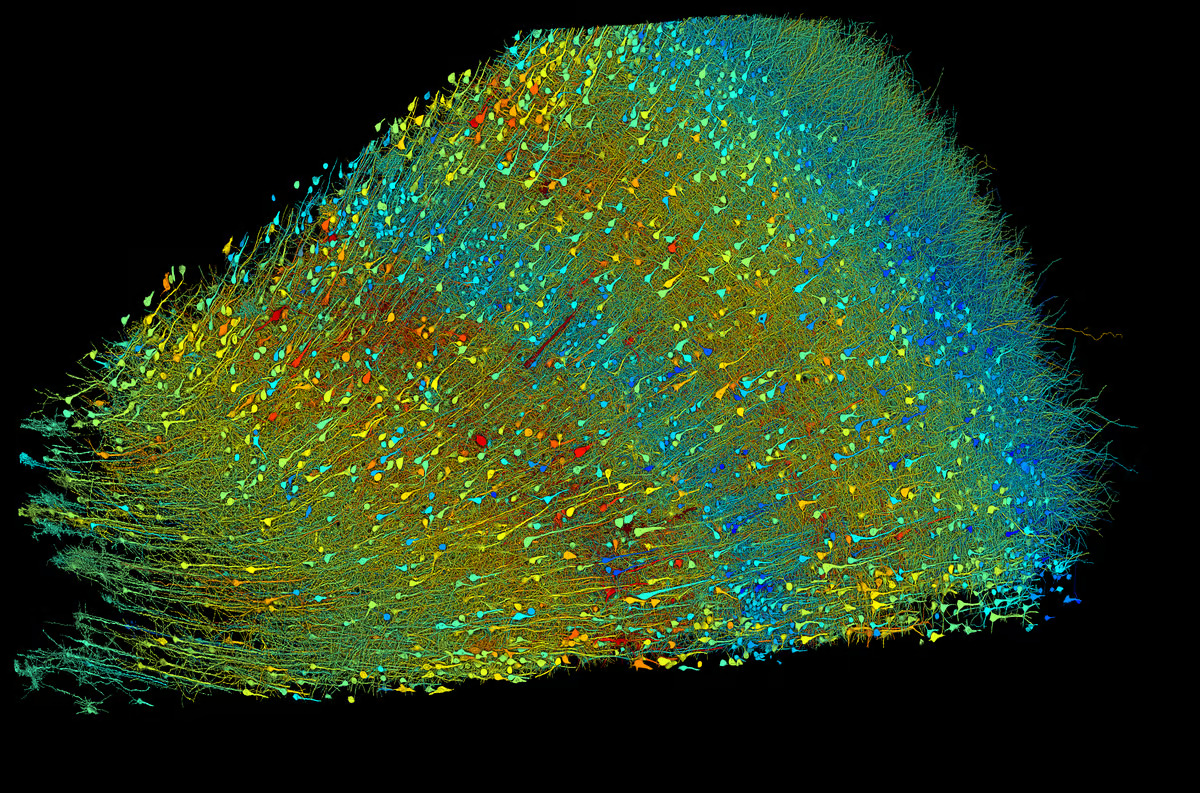
Now, a team from Harvard and Google Research have made a major breakthrough, publishing the largest ever dataset of neural connections in a human brain. Or at least, a tiny piece of one – this sample measured just 1 mm3, or about the size of a single poppy seed. But contained in that space is an incredible 57,000 neurons, 230 mm of blood vessels, and 150 million synapses.
Mapping just this tiny chunk of brain generated an astonishing 1.4 Petabytes (PB), or 1.4 million GB, of data. Let’s put that in perspective with some back-of-the-envelope math – a standard, double-layered Blu-Ray disc can hold 50 GB. That means mapping just this tiny chunk of brain generated data equivalent to 28,000 Blu-Ray discs. How can we visualize that pile? Well, each Blu-Ray case is 13 mm (0.5 in) thick, so if you stack them all up that’s 364 m (1,194 ft) tall – or, higher than the Statue of Liberty standing atop the Eiffel Tower. All that just to map a poppy seed.
If we really want to wrap this back on itself, the human brain – the most dense data storage medium we know – is estimated to have a data storage capacity of 2.5 PB. That means a brain would run out of room after being loaded with data describing just one and a half cubic millimeters of itself. Mapping out the full human brain would require an estimated 1 exabyte (EB) of data, which is the scale of CERN’s data centers for the Large Hadron Collider.
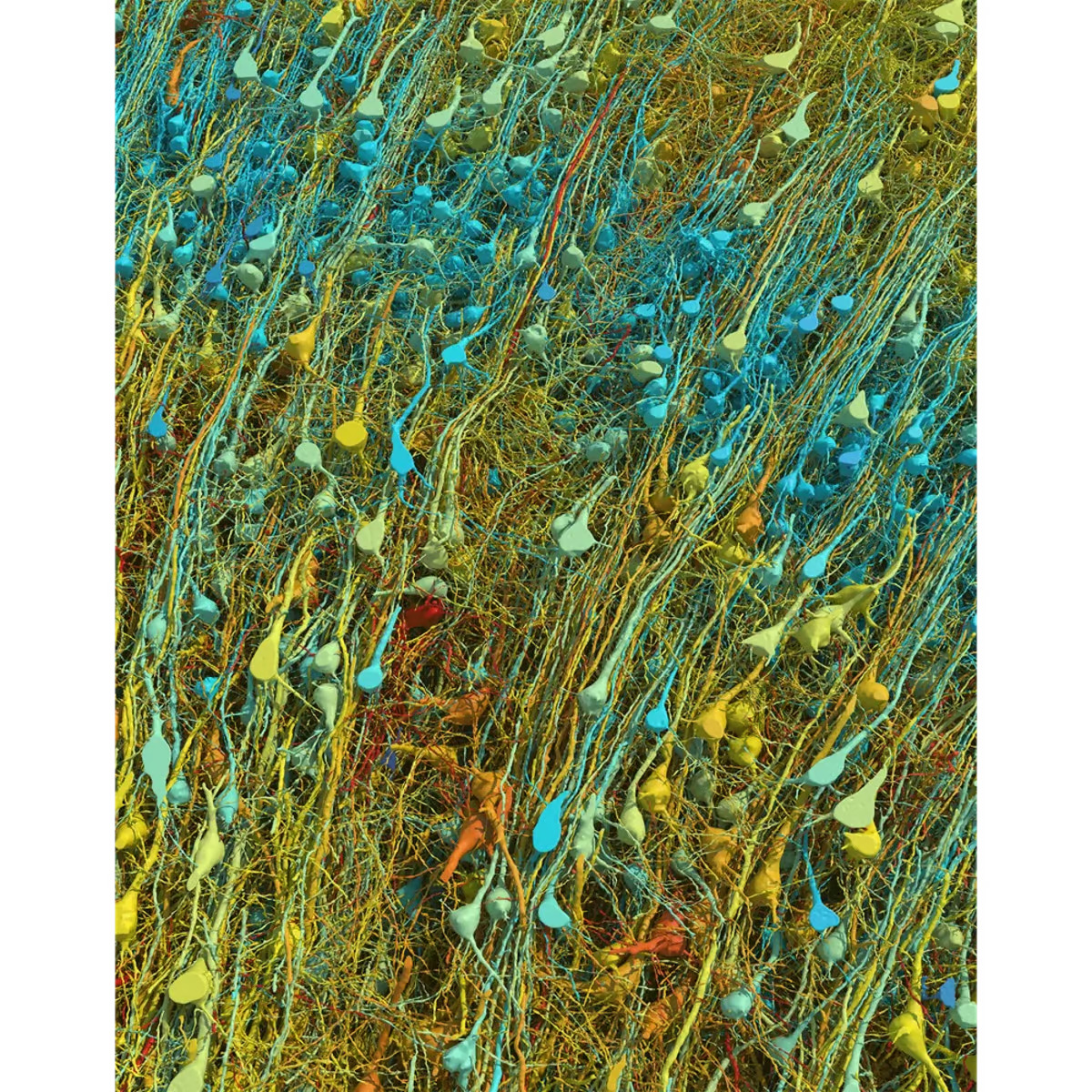
–
It can be hard to get our heads around numbers like this, so the best way to appreciate the data is by looking at the stunning maps themselves. The researchers color-coded the neurons in the sample based on their size and type, which creates images that look like dense forests. The brain region captured here is part of the anterior temporal lobe, which is responsible for semantic memory. That means the electric signals whizzing through the jungle seen here contain this person’s knowledge of objects, words, facts and other people.
It really boggles the mind to realize that right this second, the same neurons you’re looking at are firing inside your own head as they try to make sense of seeing themselves for the first time.
As well as showing just how incredibly well-connected neurons are, the images reveal some other unexpected sights. Some clusters of neurons seemed to occur in mirrored pairs, for unknown reasons. Others showed what the team calls “axon whorls,” where the long filament parts of neurons would form looped piles in a way never seen before. The researchers say it could be an unknown symptom of epilepsy, since the patient the sample was taken from suffered from the disease, or they could just be a rare occurrence in healthy brain tissue.
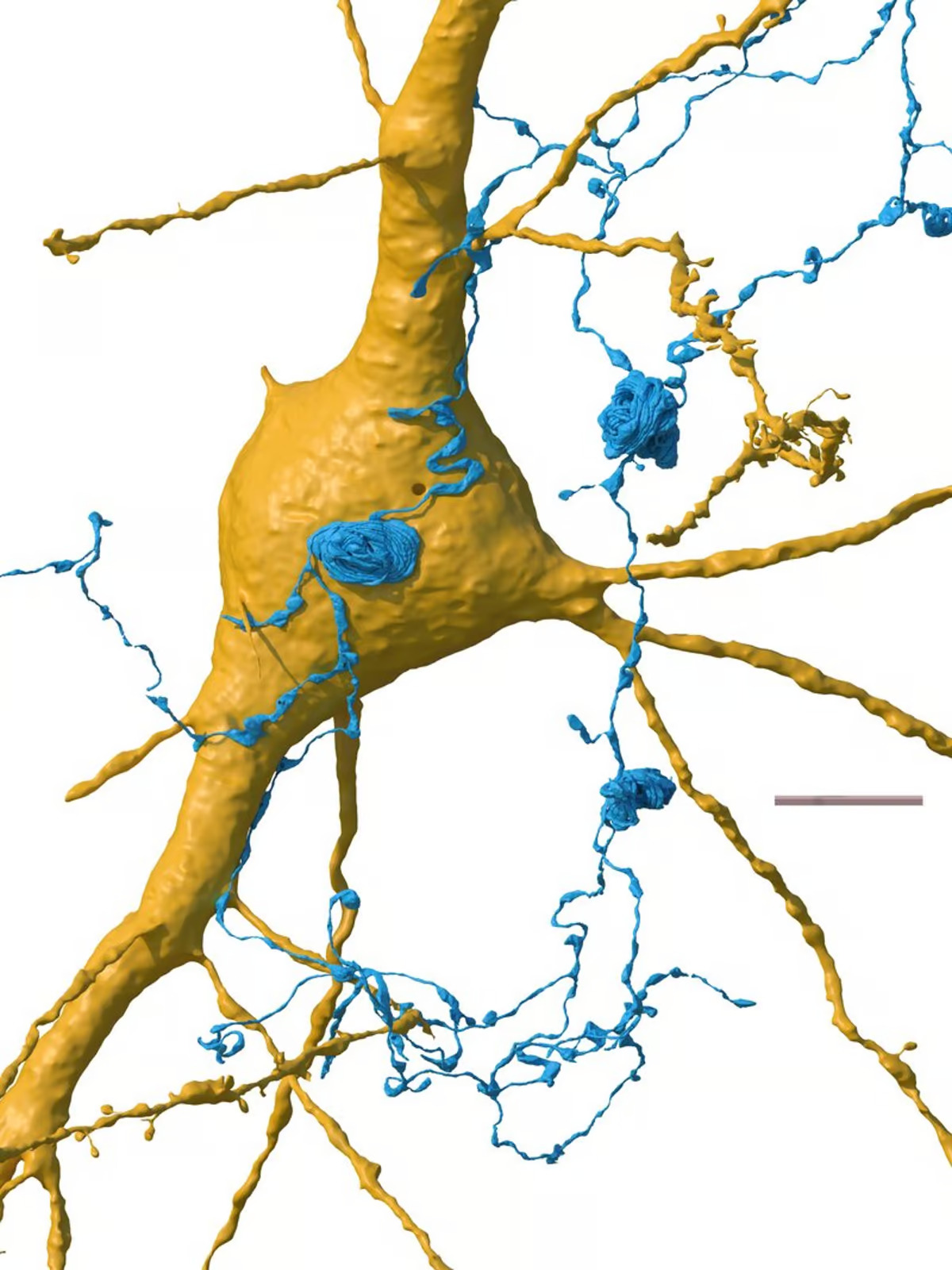
This sample is of course just a small step towards the ultimate goal of mapping the entire human brain, but it goes without saying we’re still a long way from that. So far researchers have gone from a complete worm brain to half a fruit fly brain, and now this tiny section of human brain, with the next phase tackling mice.
The research was published in the journal Science. The researchers explain the work in the video below.
–
Sources: Harvard, Google Research View gallery – 6 images
–










